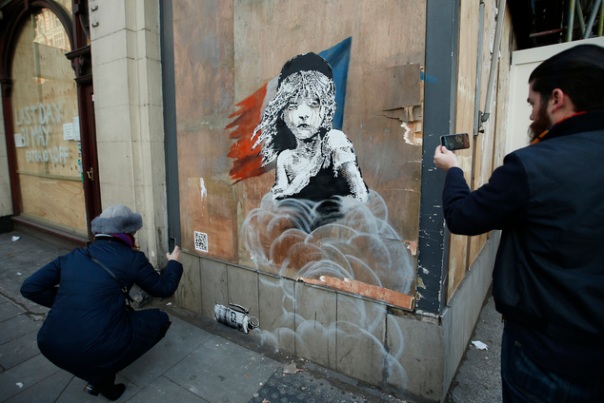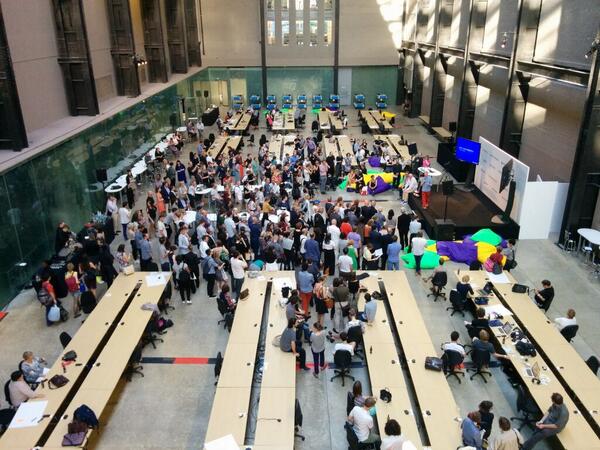
I’ve been thinking lately about why I originally set up this blog, and why, more than three years later, I continue to post on it. In the very early days I think I was looking for a place to work through some emerging ideas about digital forms of performance, in particular live broadcasts. I was still in the midst of another research project on a different topic, and I knew that I wouldn’t be able to publish any work in this new area for quite some time. The blog seemed like a good way to document ideas as they came up, to get feedback on them, and then one day to put them together into something longer and more detailed–i.e. an academic publication.
The difference now is that ‘one day’ has finally arrived. The older project is finally done and dusted and the monograph out, and now my primary focus is on the publications that will come out of this research into digital technology and Shakespearean performance. At last, I’m able to devote the bulk of my research time to these ideas, and that time has also dramatically expanded, as I’m on study leave for about 7-8 months of this year. Hurrah!
But the thing I didn’t expect is that, now that I have the time and energy to focus solely on this digital research, I’ve actually started to blog less. In fact, I haven’t written a proper post on the subject for more than half a year. Instead, I’ve been writing up this research as a series of journal articles and chapters, and making plans for the book that will eventually come. Every research day has gone to this more publication-oriented mode of writing, and as a result the blog has lingered by the wayside.
So now that I am officially on sabbatical, I thought I’d take some time reflect on what I’ve learned about both my research and myself as a researcher through blogging, and to think about what I hope to get from it in the future…
1) Blogging offers a way of working oneself into a new research area, especially when time is limited and has to be split among many other things.
The biggest difference for me between starting my first book project and my second one has been time. When you’re working on your PhD, at least in the UK, your main focus is your research. After I started my first job I was suddenly responsible for a lot more things and many more people. Extended periods of research time took a particularly painful hit: I went from spending 4-5 days a week on my research to 1 if I was lucky. So this blog became a way of stealing snatches of time in between teaching, meetings, proof checking, and everything else to start working my way into a new topic. I could have done all this privately, keeping my own personal research diary, but to be honest being able to share my ideas with others was more motivating. This might be useful for me to remember in other aspects of my life: if I really want to do something, do it publicly/socially.
2) Blogging has allowed me to work up chunks of writing (and thinking) that can become part of future publications.
This is true, but also a bit trickier than I originally expected. It’s definitely been the case that several of the details I focused on in blogs have become key points in articles that I’ve recently been drafting. But I’ve also found myself a bit unsure about how to draw on this previous writing without duplicating it. For the most part I’ve developed existing points in new terms, but there are instances in which I’m just really happy with the way I originally wrote it. So I’ve actually been thinking about redacting the occasional sentence from some of my posts, should it prove an issue. I’m still not sure about all of this: I think it’s a grey area and that feelings about it can differ depending on who you ask. About 80% of A Year of Shakespeare had been published online before it became a book, for instance, and all that material is still available through www.yearofshakespeare.com. But I know that others are understandably more wary about material previously posted online, and so I’ve started thinking more pragmatically about what can go on the blog as I come closer to getting some of my ideas more officially in print.
3) Blogging has helped me become part of a community of researchers in this field, both directly and indirectly.
This maybe seems like a no-brainer: blogging is social, responsive, immediate, conversational. You can respond to ideas in a few hours, whereas academic publishing would at best take a few months, and more realistically a few years. This doesn’t necessarily make blogging better than academic publishing–just different. I’ve been able to get talking to others in the field, both directly and indirectly, and to learn from them as I go. This has perhaps been the greatest benefit for me. The flip side is, now that I feel well connected and reasonably well read in the field, I kind of just want to get my head down and write my ideas up the old-fashioned way. Blogging has been a great way of getting started, but, as of yet, not the most natural way of continuing on.
4) Blogging can take a lot of different forms and, presumably, they can change with time.
This is probably the most important thing for me right now. When I first started blogging, I was careful to post regularly and to make sure that those posts were in-depth pieces of writing that I would be happy to publish in more academic contexts. I still really value those posts, and I must say that they’ve been the most helpful in terms of generating feedback from others and establishing some of the key issues that have turned up again in longer publications. But shorter, more whimsical, more descriptive, and/or more irregular posts have their place too. I suspect that as I get further into the writing of this project, the blogs will become more about the process of writing or the activities that surround and support the writing, rather than the writing itself. We’ll see; I might surprise myself. But given how precious having time to write is, I plan to make the most of it while I have it. This blog–or, who knows, maybe a future one–will always be there when it’s time for something different.

















